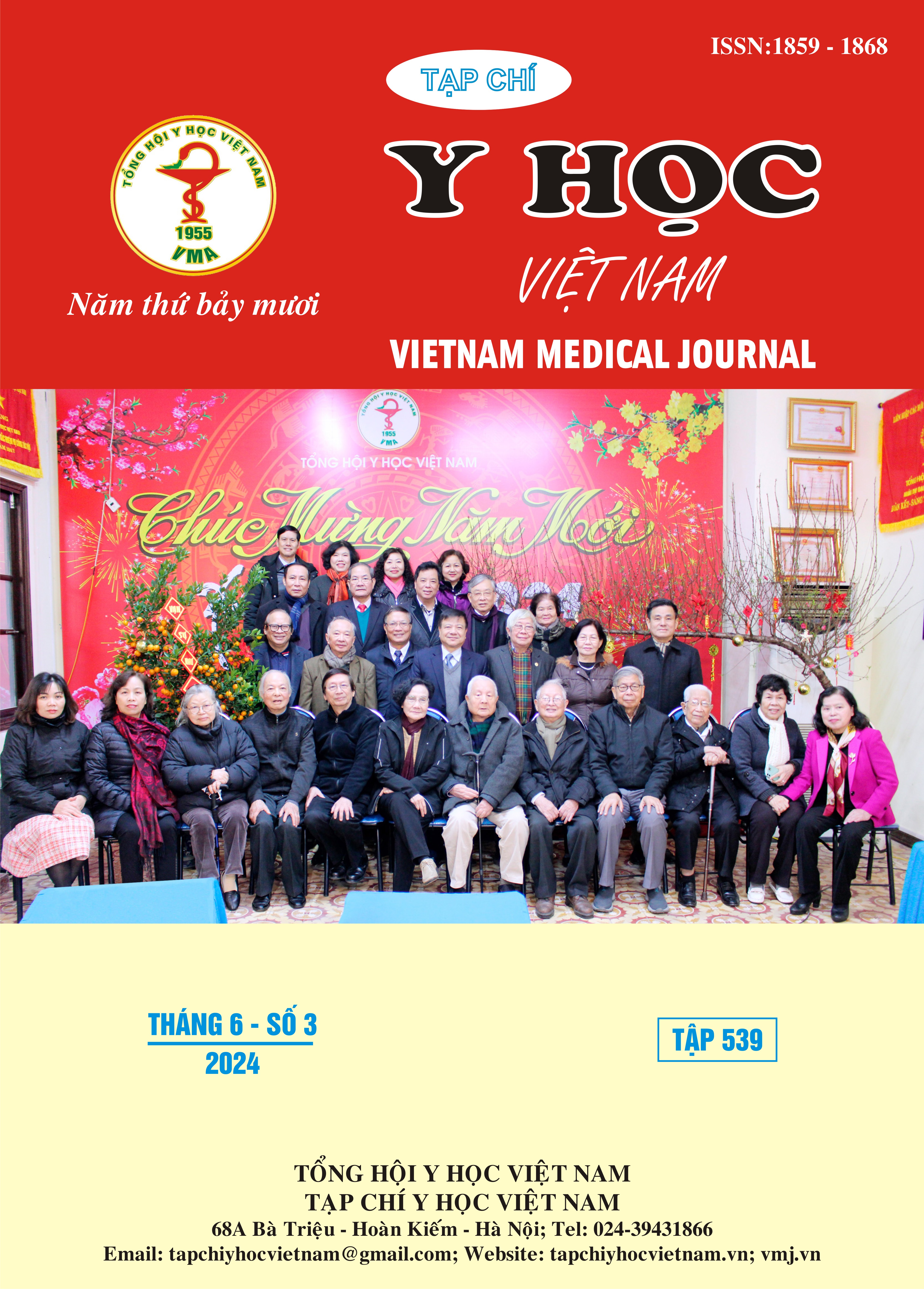EVALUATION OF THE ACUTE AND SUB-CHRONIC TOXICITY OF DANSHEN - SANQI TABLETS ON EXPERIMENTAL ANIMAL MODELS
Main Article Content
Abstract
Objective: To assess the acute chornic and the sub-chronic toxicity of the DanShen (Salvia miltiorrhiza) and SanQi (Panax notoginseng) tablet (ĐSTT) on Swiss albino mice. Subjects: The coated tablets of Dan-Shen and San-Qi were provided by DOMESCO Medical Import-Export Joint Stock Company. Method: Acute toxicity was assessed by fasting mice (50% male, 50% female) for 12 hours before administering the maximum possible oral dose (up to 0.2ml/10g). General movements, behavioral expressions, cage conditions, eating and drinking habits, defecation and urination, and the number of deceased mice were observed and recorded over 72 hours. The sub-chronic toxicity of DSTT capsules was conducted on white mice, which were divided into 6 groups: Group 1 - BT (physiological control): water; Group 2 - BL (pathological control): water and injected with 1mg/kg scopolamine subcutaneously; Group 3 - DON (positive control): Drinking Donepezil at a dose of 5 mg/kg; Group 4 - DSTT1 (low dose): DanShen - SanQi tablet at a dose of 1 tablet/kg; Group 5 - DSTT2 (medium dose): DanShen - SanQi tablet at a dose of 1.5 tablets/kg; Group 6 - DSTT3 (high dose): DanShen - SanQi tablet at a dose of 2 tablets/kg. Results: Regarding acute toxicity, the maximum dose that can be administered via a blunt-end needle directly into the mouse's stomach is 100 tablets/kg, equivalent to 31,654 mg of the drug powder/kg, with no abnormal signs in behavior or physiology observed in all experimental mice. The results showed that at all doses, the DSTT capsules led to congested liver tissue, slight lymphocyte infiltration, and few neutrophils around the blood vessels in the interstitial tissue. At a high dose (2 tablets/kg), scattered necrosis was observed. However, no histological changes in the kidneys were noted in all 6 groups investigated. Conclusion: In the experiment, the dosages of 2 tablets/kg; 1.5 tablets/kg; 1 tablet/kg are within the safe range for mice. The study on sub-chronic toxicity at various doses showed no changes in the histological structure of the kidneys in white mice during the research period. However, pathological changes in the liver were observed at high doses, requiring further research to assess the impact of the DanShen - SanQi tablet on liver pathology.
Article Details
Keywords
Capsule, ĐSTT, liver and kidney histology
References
2. Yu T, Paudel P, Seong SH, Kim JA, Jung HA, Choi JS. Computational insights into β-site amyloid precursor protein enzyme 1 (BACE1) inhibition by tanshinones and salvianolic acids from Salvia miltiorrhiza via molecular docking simulations. Computational Biology and Chemistry. 2018/06/01/ 2018;74:273-285. doi: https://doi.org/10.1016/j.compbiolchem.2018.04.008
3. Đỗ Trung Đàm. Phương pháp xác định độc tính của thuốc. Nhà xuất bản Y học; 2014:7, 15 – 215.
4. Bộ y tế. Hướng dẫn thử nghiệm tiền lâm sàng và lâm sàng thuốc đông y, thuốc từ dược liệu (2015).
5. Zhao R, Zhang Z, Song Y, Wang D, Qi J, Wen S. Implication of phosphatidylinositol-3 kinase/Akt/glycogen synthase kinase-3β pathway in ginsenoside Rb1's attenuation of beta-amyloid-induced neurotoxicity and tau phosphorylation. Journal of ethnopharmacology. Feb 16 2011; 133(3):1109-16. doi:10.1016/j.jep.2010.11.054
6. Gao Y, Liu Z, Li G, Li C, Li M, Li B. Acute and subchronic toxicity of danshensu in mice and rats. Toxicology mechanisms and methods. 2009; 19(5): 363-368.
7. Tran Thi Loan, Dao Thi vui. Evaluation of the effects of radix Salvia miltiorrhiza ethanol extract on scopolamineinduced memory impairment in mice. Journal of Pharmaceutical Research and Drug information 2020. 2020;5(11)


